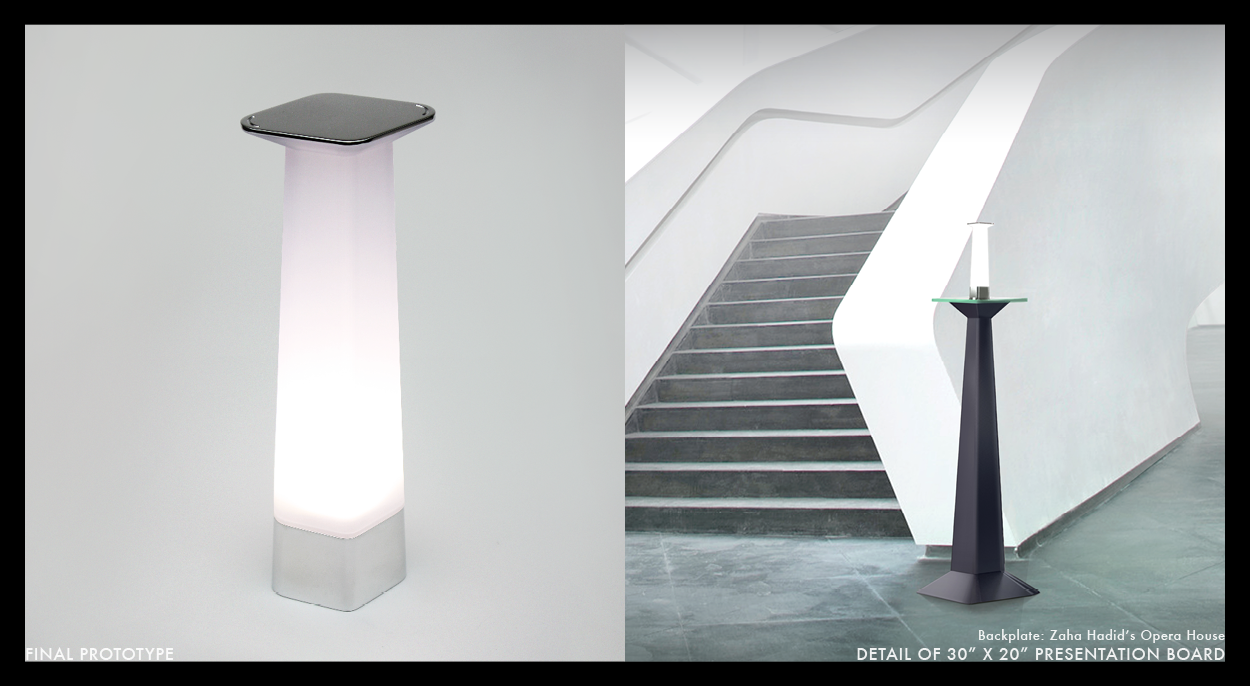Pedestal Lamp
A floor lamp with a portable light. A design charrette employing Gestalt principles to create a unique and intuitive product.
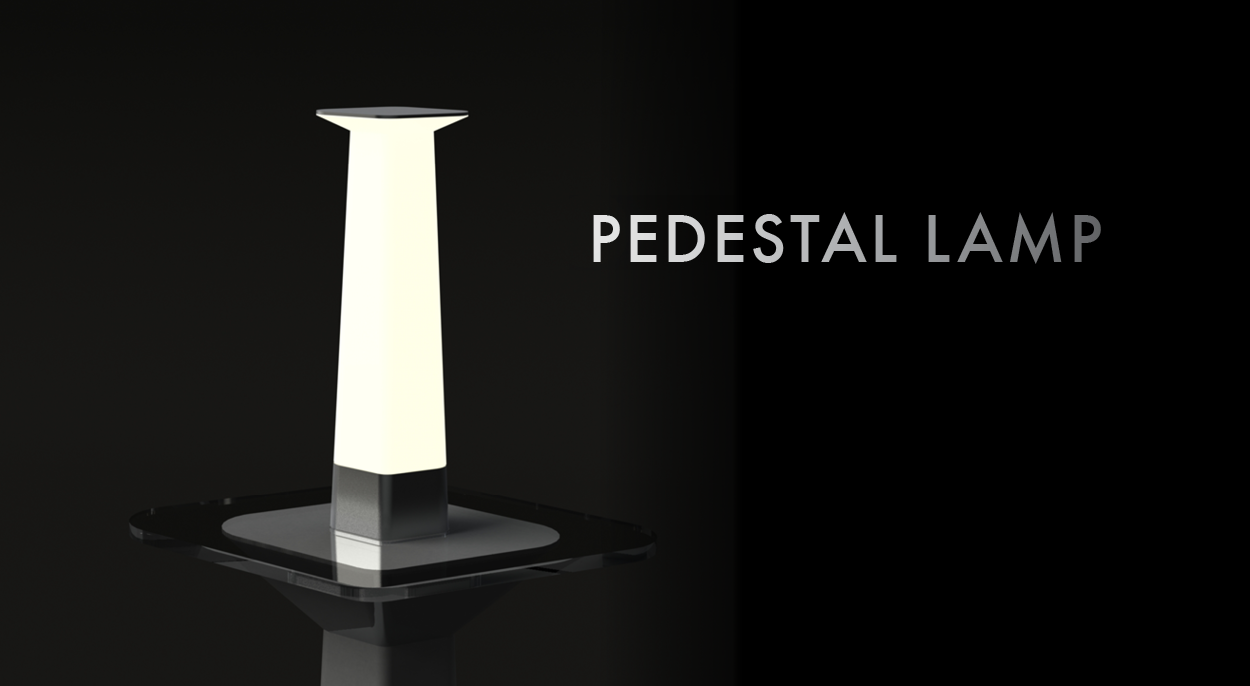
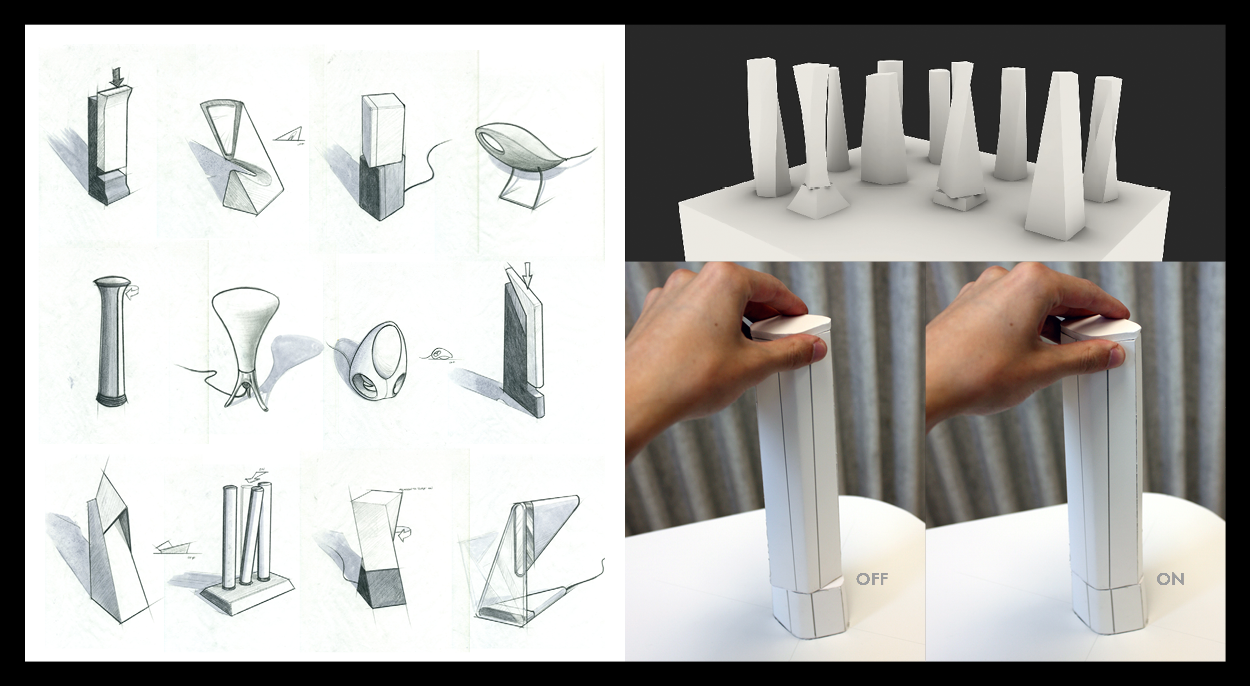
The concept stage started with some ideation of simple interactions that could turn a light on and off without the use of an ordinary switch. The lamp itself could be a switch— twisted, pushed, or flipped over. After some paper modeling, twisting revealed itself as the most intuitive feature.
With only 2 axes of symmetry, these top and base sections create binary states— on and off, aligned and misaligned, harmonious and dissonant. The cross-section of the lamp was derived from the angle and curve between a hand’s thumb and index finger to create a tactilely appealing form.
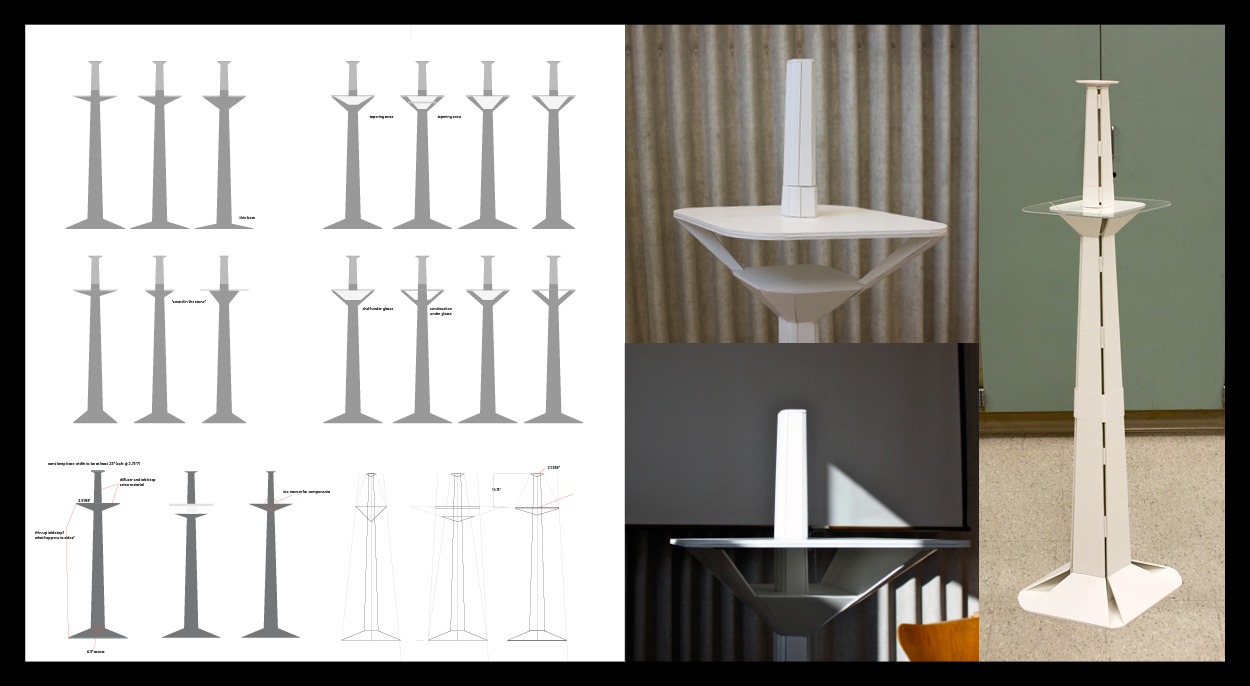
The pedestal serves to elevate the light as a floor lamp. The portable lamp’s footprint is extruded downward to create a continuous relationship with the pedestal, and further encourage the alignment of the lamp’s diffuser to its base to illuminate the light.
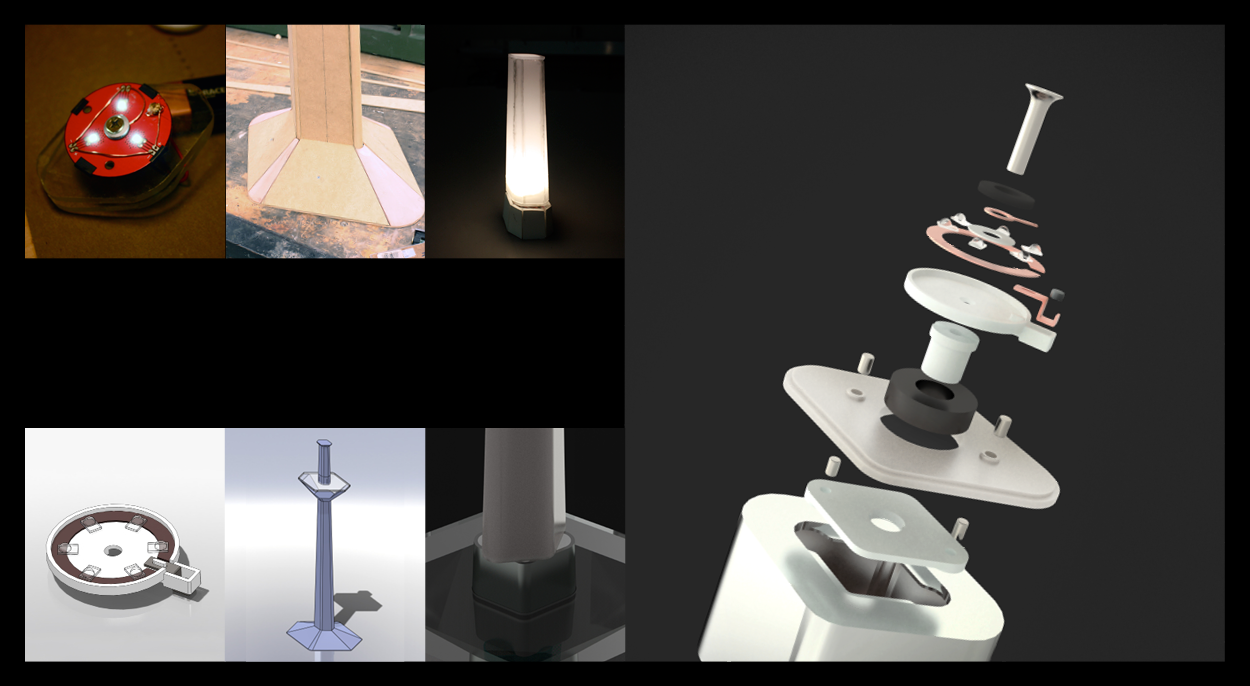
The engineering of functioning prototypes developed concurrently with the lamp’s form development in CAD. Mechanical and electrical components dictated the draft angle of the lamp’s profile, and ultimately, the shape of the entire system. The pedestal’s foot and table proportions were finessed to create an inviting “sword in the stone” silhouette.
The lamp’s circuit closes only when metal contacts in the base and diffuser are aligned. Batteries housed in the machined aluminum base send power to the LED array through the single screw that fastens the assembly. A polycarbonate-like 3D-printed diffuser refracts the light in all directions.
